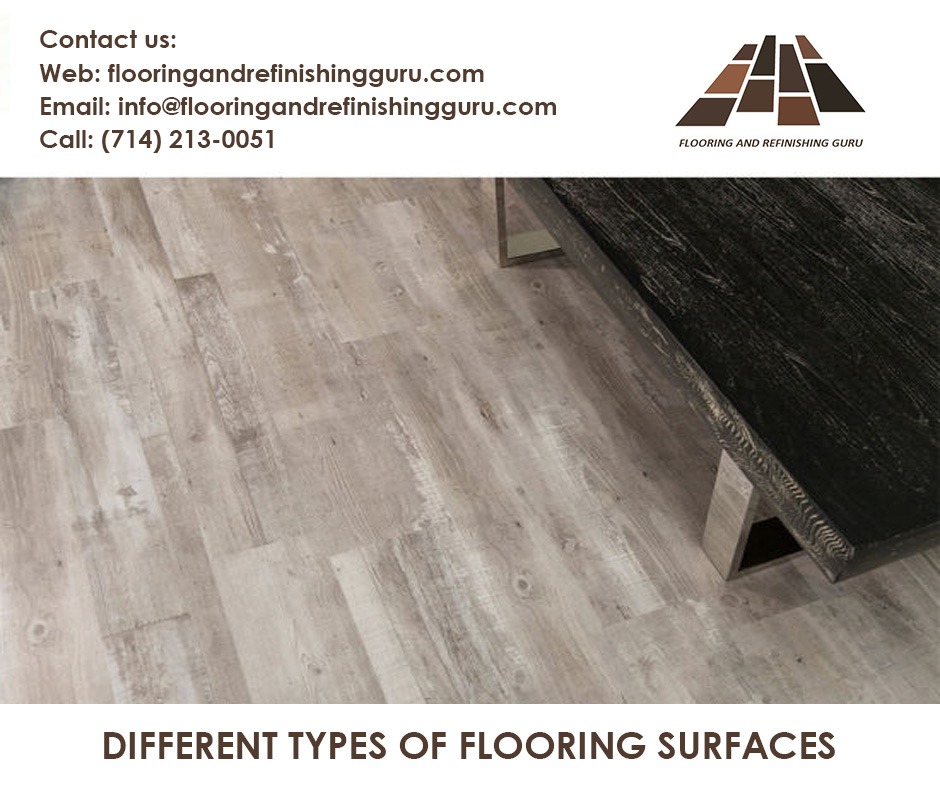Selecting the optimal flooring surface is a complicated task for homeowners and businesses. Various factors, such as damp resistance, thermal insulation, sound insulation, and hardness contribute to the purchasing decision. Explore premium flooring surfaces for every space. From hardwood to tile, our durable, stylish options enhance any room. Environmental conditions also play a crucial role: Choose a flooring surface with high resistance to moisture, humidity, and heat.
There are various types of flooring surfaces available, each with its unique characteristics and benefits. Whether you’re renovating your home or designing a new build, comprehending their use and effects is essential for making an informed decision. Let’s explore some popular types of flooring surfaces:
Hardwood Flooring
Hardwood flooring is a safe, low-maintenance, and attractive option for individuals. Its surface is designed with different types of woods, such as oak, maple, fir, cherry, beech, and bamboo.
The hardwood category can be segmented into solid or engineered wood: Solid wood can last up to 100 years while engineered wood has a life of 50 years. Hardwood floors are hypoallergenic; they do not harbor micro-organisms, such as dust mites and E. coli.
Laminate Flooring
Laminate flooring is a versatile and cost-effective option. It consists of several layers, including high-density fiberboard core, a photographic layer, and a protective top layer. It is easy to install and maintain. Moreover, the surface is preferable for high-traffic areas, such as malls, kitchen, and bedrooms.
Laminate flooring is resistant to moisture, stain, and color fading: The aluminum oxide coating keeps it safe from chemical reactions and high-temperatures. There are four layers of laminate flooring:
Backing Layer
Construction: Plastic, paper, or melamine
Use: Acts as surface stabilizer and moisture-inhibitor
MDF/HDF
Construction: Wood fibers attached with resin or adhesive
Use: Moisture-resistant
Pattern Layer
Construction: Sheets of paper glued with melamine resin
Use: Limpid and realistic appearance
Wear Layer
Construction: Aluminum oxide
Use: Manage gloss intensity
Vinyl Flooring
Vinyl flooring is a viable option for high-traffic areas, such as kitchen, bathroom, and basement. It is available in a wide range of designs, including realistic wood and stone textures. The surface is composed of different layers sandwiched together to form a protective covering. Vinyl floors are moisture-resistant, easy to clean, and noise-repellant.
There are two types of vinyl flooring: Vinyl sheet flooring and luxury vinyl tiles (LVT).
Vinyl Sheet Flooring
VSF is a fiberglass-cushion-backed flooring option that comes in different styles and designs. It is an economical solution for businessmen and homeowners. These sheets are phthalate-free with low VOCs and formaldehyde emissions.
Luxury Vinyl Tiles
This flooring type is designed to replicate natural flooring options, such as ceramic tiles. It is available in trendy and timeless patterns; users can make their selection based on the interior décor and color theme. LVT is easy and quick to apply. Moreover, experts don’t need to move the interior decoration while installing the new surface.
Tile Flooring
Tile flooring, made from ceramic or porcelain, is known for toughness and attraction. Ceramic tiles are made from natural clay and offer a wide array of colors and patterns. On the other hand, porcelain tiles are resistant to dirt, stains, and moisture, making them suitable for both indoor and outdoor use.
This flooring type is easy to maintain. It can be cleaned with household cleaners (solvents or detergents) and a mop. Moreover, you will need to apply sealant on the tiles after some years.
Natural Stone Flooring
Different raw materials, such as marble, granite, limestone, and travertine are used to create stone flooring. Each type of stone has unique patterns, colors, and textures; their selection is based upon the user’s demands and requirements. Natural stone floors can withstand heavy foot traffic and provide excellent thermal conduction.
Bamboo Flooring
Bamboo flooring is a renewable and sustainable option that has gained popularity in recent years. Its appearance and characteristics are similar to hardwood floors in many respects. The floor offers exceptional hardness and durability. Moreover, it is resistant to heat, moisture, and stains. Bamboo flooring is available in different colors, such as antique taupe, autumn hazelnut, carbonized, and others.
Selecting a specific type of flooring surface is not an easy task. You will require an expert. Better still, you can connect with a reliable firm like Flooring and Refinishing Guru and book an appointment. Their professionals will provide the best options for your premises.


